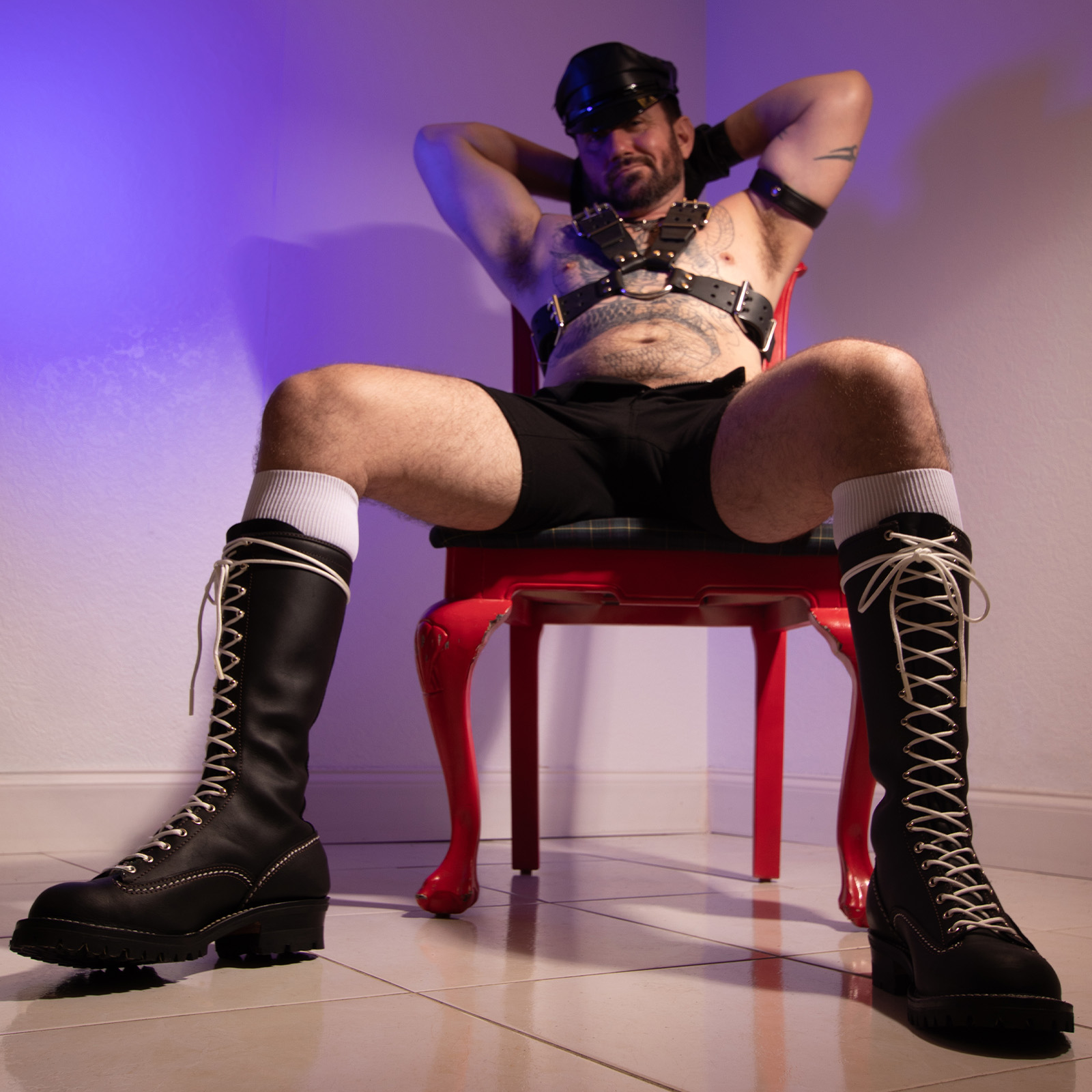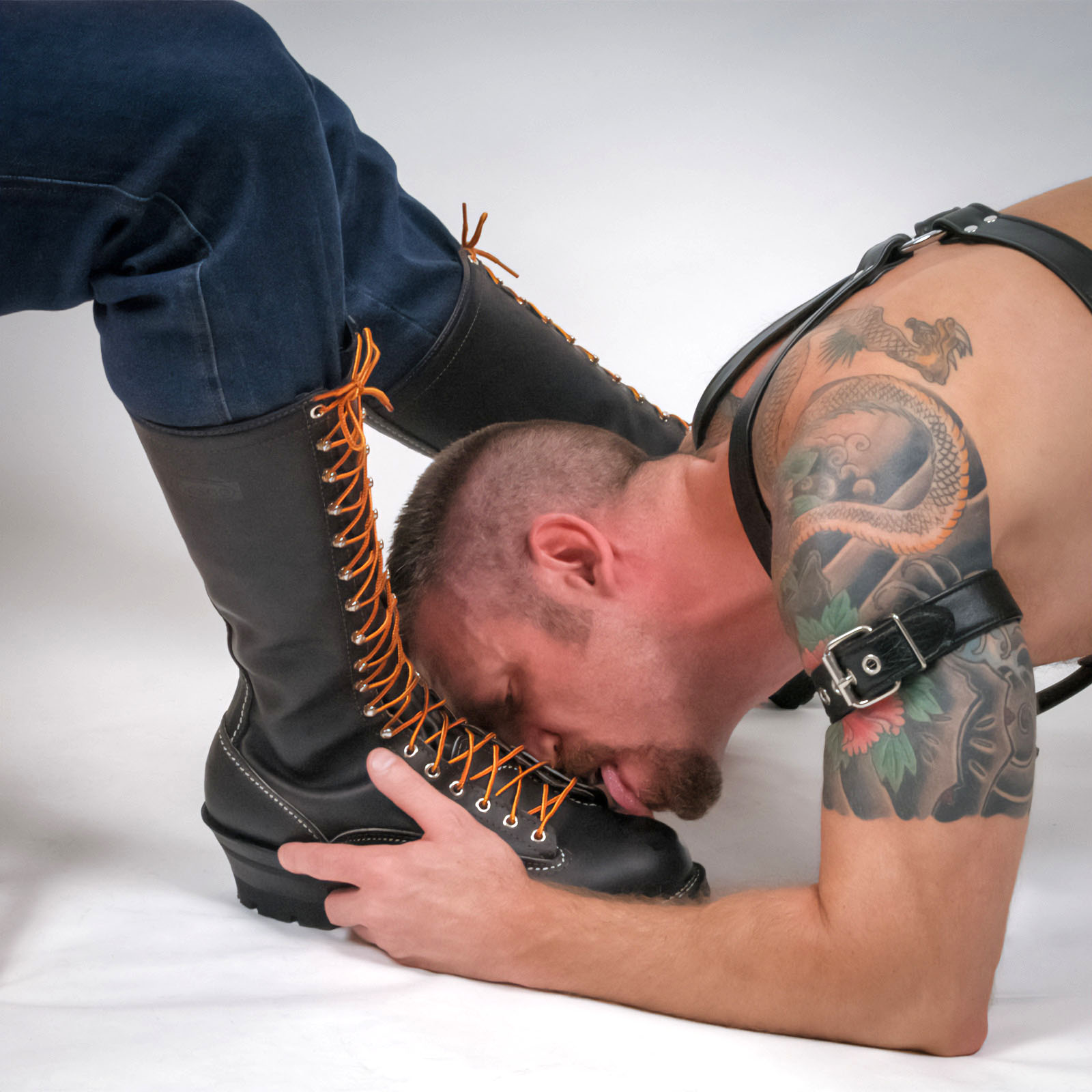Boot Styles: A History

History shows how boots evolved from survival gear to symbols of fashion, fetish, and power.
History shows that boots are not just something you lace up. They are symbols of survival, rebellion, sexuality, and pride. From soldiers and cowboys to punks and kinksters, boots have carried people through centuries of labor, conflict, fashion, and fetish. Each style tells its own story, carved into leather and stitched into culture.
History of Boots: From Survival to Power
The earliest boots were designed for protection. In cold climates, hides were wrapped around feet and tied for warmth and mobility. Over time, leather became the material of choice because it was durable, workable, and flexible enough to mold to the body.
When armies marched, boots marched with them. Roman soldiers, medieval knights, and cavalry units relied on tall reinforced boots for long campaigns and rugged conditions. Military influence gave boots their lasting connection to discipline and authority.
Boots in Labor and Cowboy History
By the 19th century, industrial workers and pioneers needed boots tough enough for long hours and harsh conditions. Miners, railroad crews, and loggers depended on them as tools of survival. Out West, the cowboy boot took shape. Adapted from Spanish vaquero designs, these boots had angled heels for stirrups and tall shafts for leg protection. Over time, the cowboy boot became an American icon of grit, independence, and masculinity.
History of Fashion and Fetish
In Victorian times, boots laced tightly up women’s legs, emphasizing control and restriction, while polished riding boots carried connotations of authority. By the mid-20th century, glossy leather and thigh-high styles appeared in underground photography and pulp magazines. Boots became more than functional gear, turning into erotic symbols of dominance and submission.
Leather Culture and Queer History
After World War II, veterans returned with combat boots and a hunger for freedom. Many joined motorcycle clubs where heavy boots and leather gear became uniforms of brotherhood and resistance. In gay bars and leather spaces, boots gained new meaning as markers of dominance, submission, and erotic identity. Boot worship, licking, and blacking grew into rituals of service and devotion that remain traditions in leather culture today.
Styles That Command Attention
Boots appear in many forms, but certain styles dominate both fetish and fashion:
- Thigh-highs and over-the-knee: Sleek, glossy, and erotic, they elongate the leg and project dominance.
- Combat and military boots: Rugged and commanding, perfect for those who crave intensity.
- Riding boots: Polished and structured, ideal for equestrian elegance with a kink edge.
- Work boots: Practical and raw, often celebrated for their grit and toughness.
- High fashion hybrids: Latex, patent, platform, and stiletto boots blur the line between runway and fetish.
Each style is more than footwear. It is a symbol, a tool, and often an object of worship.
Why History Fuels Boot Fetish and Desire
Boots excite because they engage every sense. The smell of leather, the gleam of polish, the stomp of a heel, and the weight pressing into skin all combine to create intensity. They carry associations with power, while rituals like polishing or licking transform them into acts of service and reverence.
In fetish play, boots are never just accessories. They are anchors of identity, amplifiers of control, and objects of desire that tell their own story with every scuff and shine.
The Legacy of Boot History
From survival gear to fetish icons, boots have carried more than bodies through history. They carry the memories of warriors, workers, rebels, and lovers who wore them with intent. Today they remain central to leather and kink culture while also inspiring fashion and art.
When you lace them up, stomp, or kneel, you step into that legacy. Boots are not simply footwear. They are history, culture, and erotic energy bound together in leather and steel.



